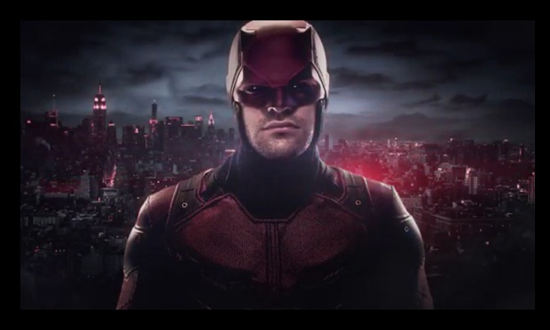Daredevil and Urban Backgrounds
 Image credit: The Guardian
Image credit: The Guardian
One of the interesting (and, at least initially, disappointing) promises made by Daredevil is that it will feature not just a superhero, but also the city in which he dwells. This would be more or less a new thing in the Marvel Cinematic Universe. Characters may represent regions or ideologies (Thor lands in the American Midwest, Black Widow deals with Russian trauma, Iron Man models a form of urban masculinity), but they never seem to be from a specific, real place. Even in the DC Universe, where the Dark Knight trilogy obsessed over the relationship between Batman and the city he served, takes place in fictional Gotham City, recognizably akin to New York but made bizarre and larger-than-life by its iconography and events.
Daredevil, on the other hand, lives in Hell’s Kitchen, a quite specific location within Manhattan. Admittedly, his Hell’s Kitchen differs from that of modern America, since the events of Avengers: Assemble have de-urbanized the region and transformed it into the “dark, gritty” environment so beloved of contemporary superhero franchises. Still, the real-world environment leaves one with hope that, even in a Marvel film, one might hear a bit of the city’s voice speaking as something other than an echo chamber for the hero’s antics.
Unfortunately, at least with Daredevil’s first episode, this wasn’t the case. After a brief father-son scene establishing the blindness of Matt Murdock (i.e. Daredevil), and a visually-striking opening montage imagining a city (and statue of justice) made of congealed blood, and an scene in a confessional that emphasizes the hero’s alienation from the comforts of religion, the show proceeded to introduce two victims of the city’s criminality. The first victims are an utterly passive group of women who are about to be sold into slavery, the second a beautiful damsel named Karen Page who is framed for the death of her co-worker. Both play along well-trod narrative conventions: the city’s (mostly female) victims are seen as relatively powerless (though Karen, at least, defends herself against a jail-cell attack), and everyone needs Daredevil, the lone hero, to step in.
This ties in rather well with the iconography promoting television superheroes discussed by Deb, with its focus on individual characters abstracted from their environments. But by shifting the focus to the one costumed hero, it silences the rest of the city.



Add new comment